A Coptic Church Sprouting from the Sacred Caves of St. Simon at the base of Mount Mokattam, Cairo
The Coptic Christians are Surrounded by An Arab Egypt: Who Are These People?
July, 2023. For literally thousands of years, Egypt has been a melting pot of many people of the Ancient World. The waves of newcomers merged with the native, Egyptian population while adding cultural diversity. The last huge invasion was the Arabs in the 7th Century A.D. However, the group now known as the Copts have been in Egypt since ancient times and this group never fully blended in with any “newcomer” cultures. Today, only the Egyptian Copts remain as the true descendants of the original, ancient Egyptian of Pharaoh fame.
Coptic Christians, known as Copts, are the largest ethno-religious minority in Egypt, constituting roughly 10 per cent of Egypt’s 105 million people. Although Copts are primarily in Egypt, they are also spread throughout neighboring Libya and Sudan, and elsewhere. In Australia, for example, there are some 30,000 Copts. The Copts are Christians, and they are definitely Egyptians, and they may or may not be Arabs — depending on who is doing the defining. Copts believe themselves to be the descendants of Egypt’s ancient Pharaonic people. They first converted to Christianity with the arrival of St Mark in Egypt in 62 CE. Six hundred years later, the Arabs invaded Egypt from 639 and 646 AD. The Copts and others were forced to convert to Islam, but some Copts resisted giving up their religion; and to varying degrees, resisted being part of the Arab culture taking root in Egypt. This resistance and self-segregation, gave rise to the modern Coptic Christian minority in Egypt. Although many Copts now identify as Arabs, many other Copts celebrate their Pharaonic origins, although all Copts speak in the national language, Arabic. The original Coptic language, derived from the ancient Pharaonic alphabet, is still in use, but has limited currency. Indeed, the word Coptic itself is derived from the ancient Greek word that means “Egyptian.” The Copts are the original Egyptians.
However, the demographic wrinkle of Coptic survival got transformed into a stark social division with the rise of Arab Nationalism in Egypt in the 1950’s. Nasser threw Egypt into the middle of a Pan-Arabism served to exacerbate the ethnic and religious difference between Coptic Christians and Muslims in Egypt. From the 1950’s to now, The Copts suffer from discrimination and persecution. The ongoing ethnic and religious tension flares up on occasion to violence against Copts, including firebombing Coptic churches. See for example – Cairo has recently seen conflicts between some Muslims and Coptic Christians an news article subtitled “Fighting broke out over false rumours that a Christian woman was being prevented from converting to Islam”
The Coptics Have an Ancient and Storied Christian Heritage
The Copts, while fully Egyptian, have survived as a strong religious entity who pride themselves on their contribution to the broader Christian faith. The Nicene Creed, which is recited in Christian churches throughout the world, was authored by one of the Copt’s favorite sons, Saint Athanasius, the Pope of Alexandria for 46 years, from 327 A.D. to 373 A.D. The Coptic status of defender of the Faith is well deserved. After all, according to the Bible, Egypt was the refuge that the Holy Family sought in its flight from Judea: “When he arose, he took the young Child and His mother by night and departed for Egypt, and was there until the death of Herod, that it might be fulfilled which was spoken by the Lord through the prophet, saying, “Out of Egypt I called My Son” [Mathew 2:12-23]. https://stsmaryandmenari.org/coptic-church-history/
Three Elements of the Coptic Faith Set It Apart
There are three important Coptic beliefs that set the Copts apart from many of the other mainstream Western Christian faiths
First, Coptics believe in the Trinity of God – God the Father, God the Son, and God the Holy Spirit.
Secondly, and perhaps most importantly, Coptics believe that Jesus was created by God and that, unlike God the Father, Jesus is a finite being who is not eternal or divine, in and of Himself.
Finally, the Coptic Church does not worship the saints and icons of Christ. Copts do, however, have painting of the saints traditionally on wood, but also now also depicted on modern materials. While not separately worshipped, the Copts believe saints act as intercessors for our prayers. See the section on the Coptic Museum below for pictures of saints. The above discussion is taken from: https://christianministryedu.org/faq/what-is-the-coptic-church/
The Ancient Coptic Temples and Monstaries are Thriving Today
Scattered throughout Egypt, there are Coptic churches, cathedrals, monasteries and sanctuaries, old and new. Some of the oldest of churches and monasteries can be 1,200 years in the making. Yet many such institutions are still strong and thriving, have vibrant modern congregations and are centers of Copt worship, learning and culture. On the other hand, some of the old churches have flagging membership, a common fate of many modern houses of worship of many religions. The main Coptic bedrock, the historic worship centers, include: first, the Cairo Cathedral of St. Simon and the rock hewn churches clustered around it; second, the many worships centers in the Coptic Quarter of Old Cairo; and third, the Monasteries at Wadi Natrun, located north of Cairo, half-way to Alexandria on the Mediterranean Sea. There exisits a fourth hoary Coptic center at St. Catherine’s Monastery in Egypt’s Sinai Peninsula. Just making the pilgrmage to St. Elizabeth, which is stuck way out in the middle of the Sinai desert, is a religious and cultural coup. As a bonus, the Monastery is next door to the literal, actual once burning bush of the Old Testament fame. A short but adventurous hike up the mountain from St. Catherine will bring the faithful to the actual vegetation where God, in the form of a burning bush, spoke to Moses.
This article examines the first three main centers of Coptic faith: The Mountain Cave Cathedrals of St. Simon, the Coptic Quarter of Old Cairo, and the Monastery Complex of Wadi Natron. Moses’ burning bush and St. Catherine’s Monastery in Sinai was not visited by this writer but will be the subject of a future article, alhamdulillah! (God willing in Arabic)
The Rock Cave Cathedral in the Middle of Cairo’s Rubbish Recycling Hub
The seven connected rock cave churches of St. Simon are located at the base of Mt. Mokattam Mountain, a hilly area next to the Coptic town of Manshiyat Nasser, commonly known by it’s derogatory name, Zabbaleen, or Garbage City, as explained below:
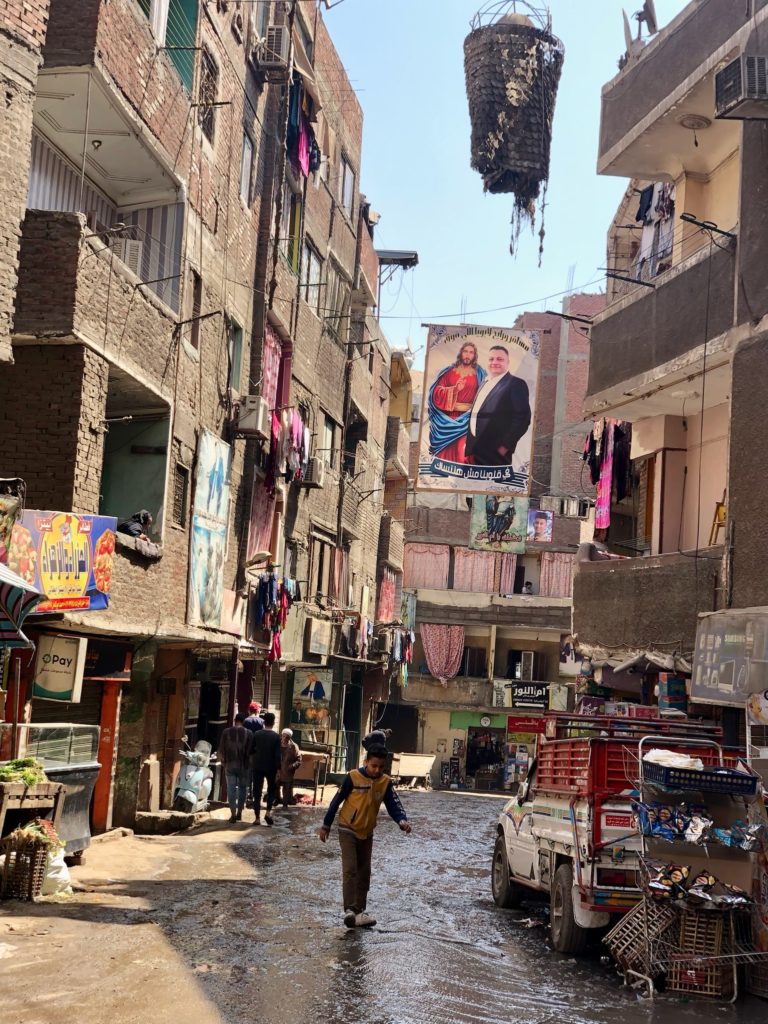
The St. Simon Monastery section of Cairo is in historic Coptic, improvished community famously known as the garbage collection and recycling hub for the Cairo metro area. In 1975 the first Christian church was built in the village. However, after a large fire broke out nearby, work began on a monastery that was built right into the cliffside to avoid any future fire hazard. Using a pre-existing cave and the slope that led into it, the current monastery seats 20,000 people around a central pulpit. Other nearby caves have also been built into separate church spaces, and all of them have been linked together underground to create a massive Christian complex in the heart of what is derisively called by the insulting name Zabbaleen, which translates to ”Garbage City.” The real name of the town is Manshiyat Nasser. Manshiyat is a slum settlement with a population of around 60,000 mostly Coptic residents. If the reader visits these sites, please do not refer to this Coptic town as ”Garbage City.” Try Manshiyat as short but acceptable version of the full name of the town, Manshiyat Nasser.
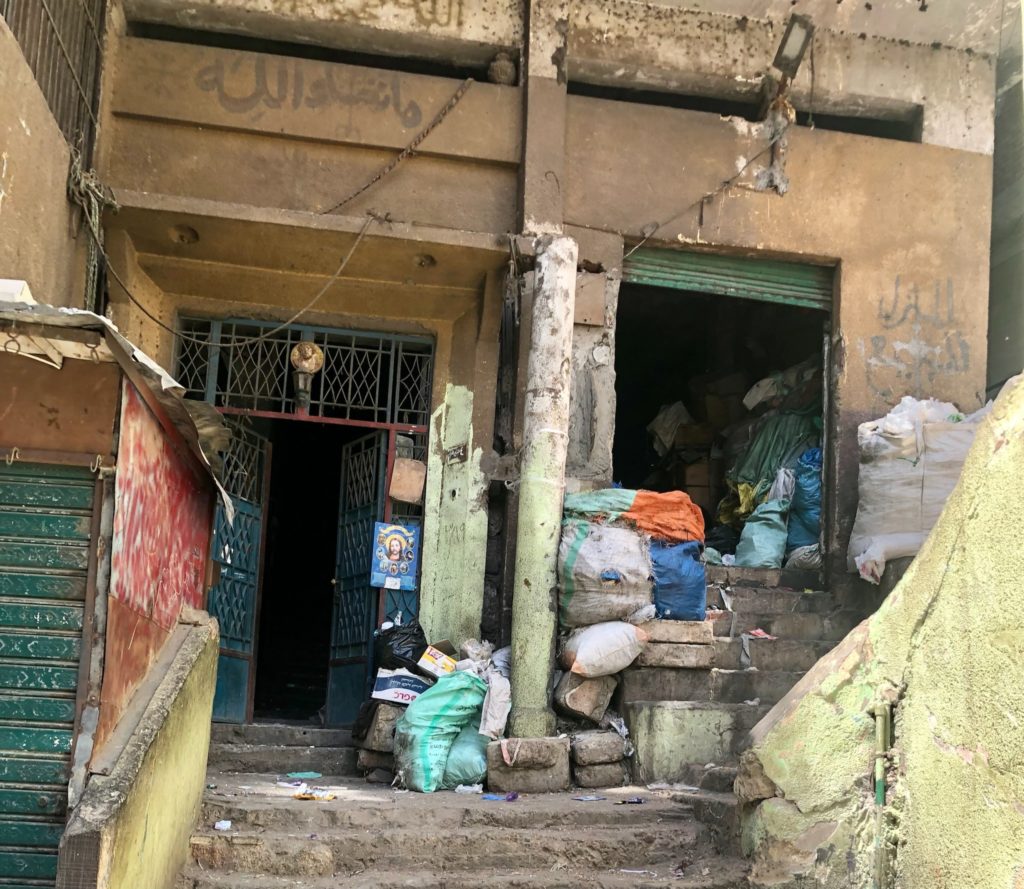
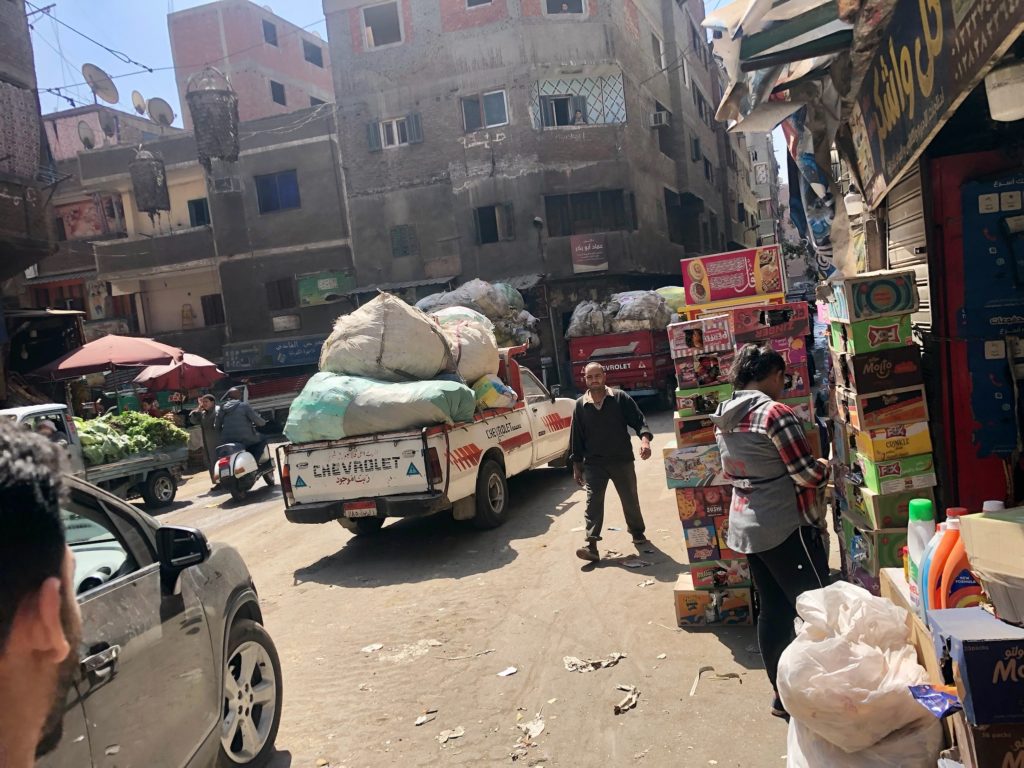
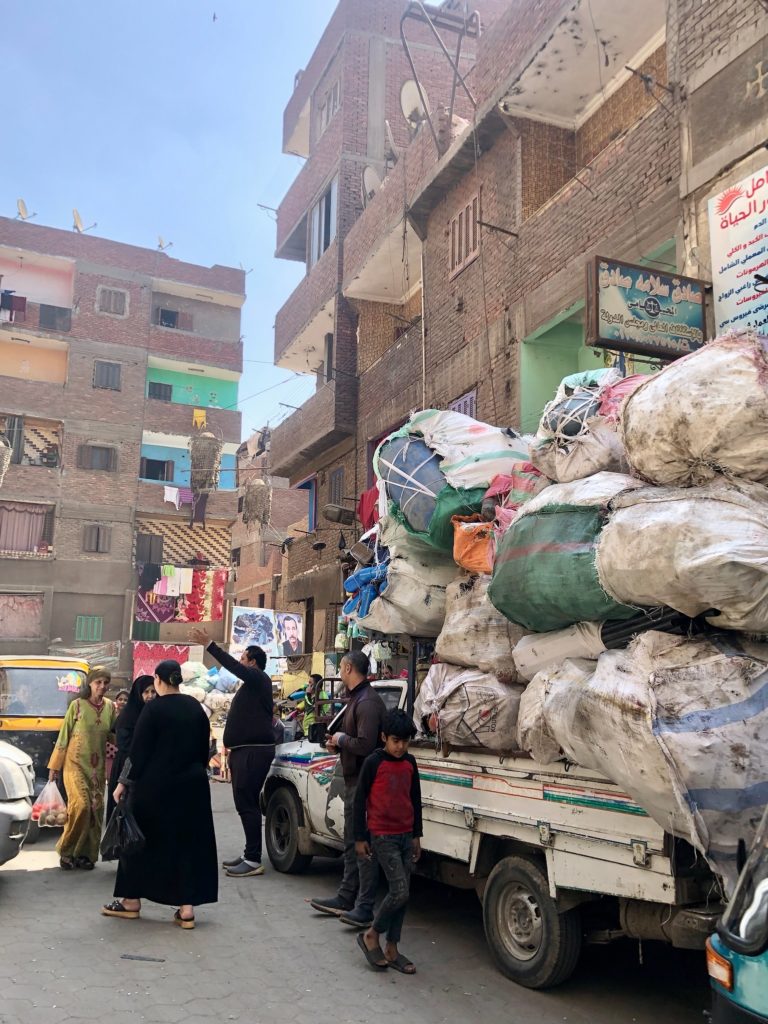
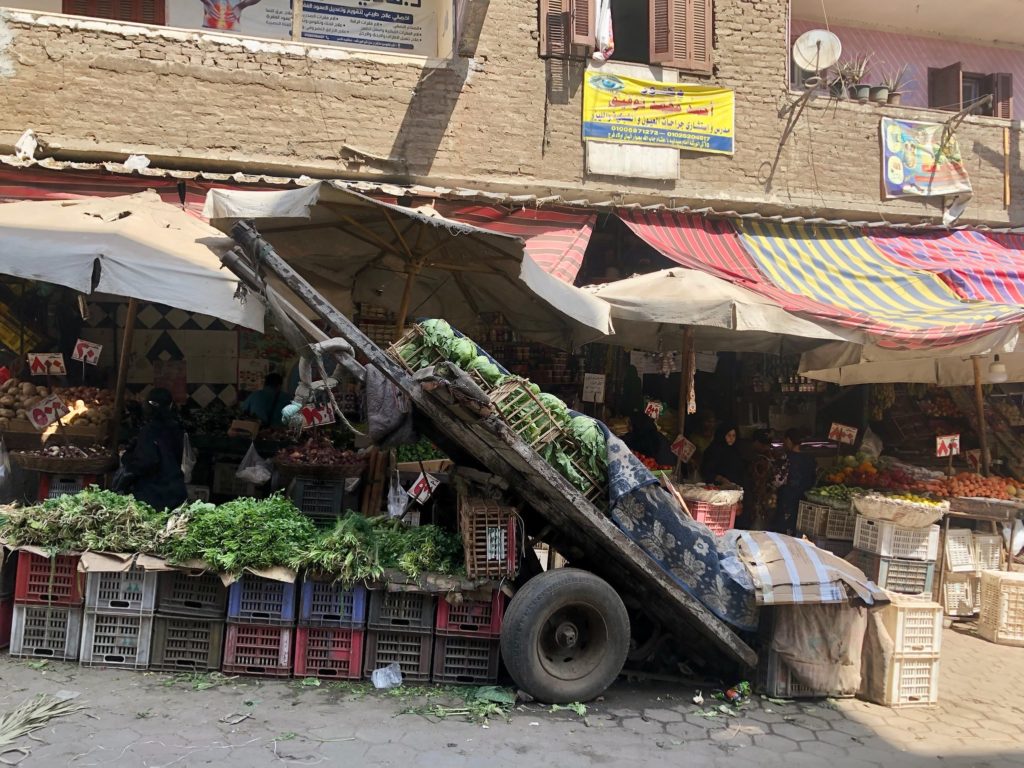
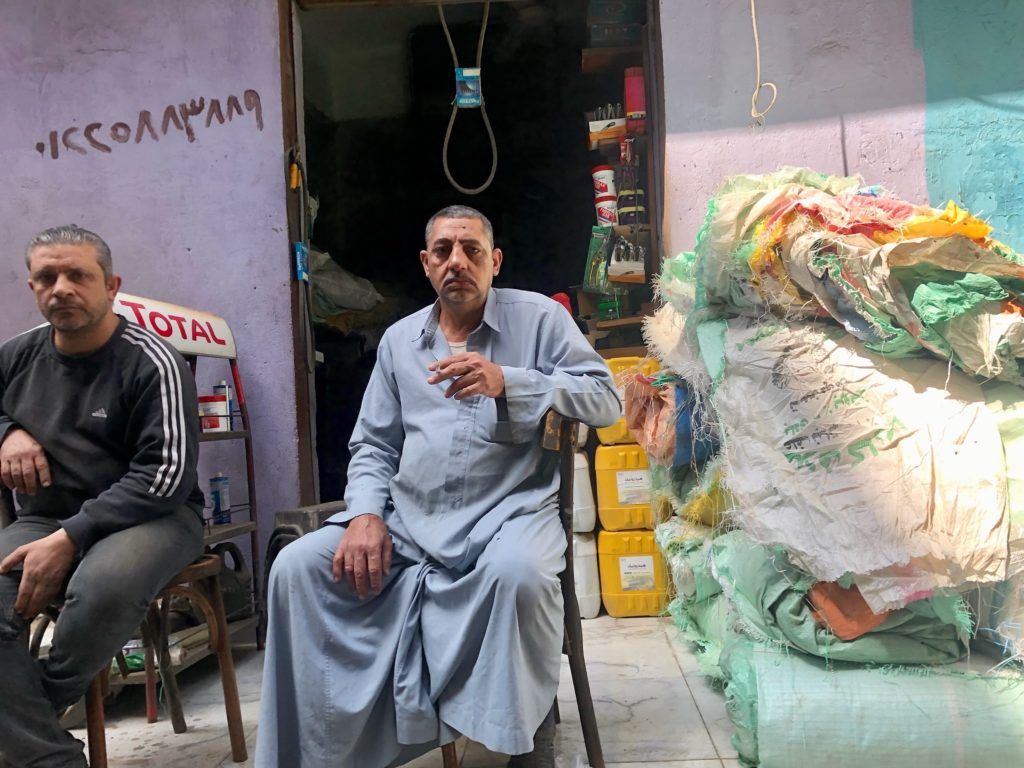
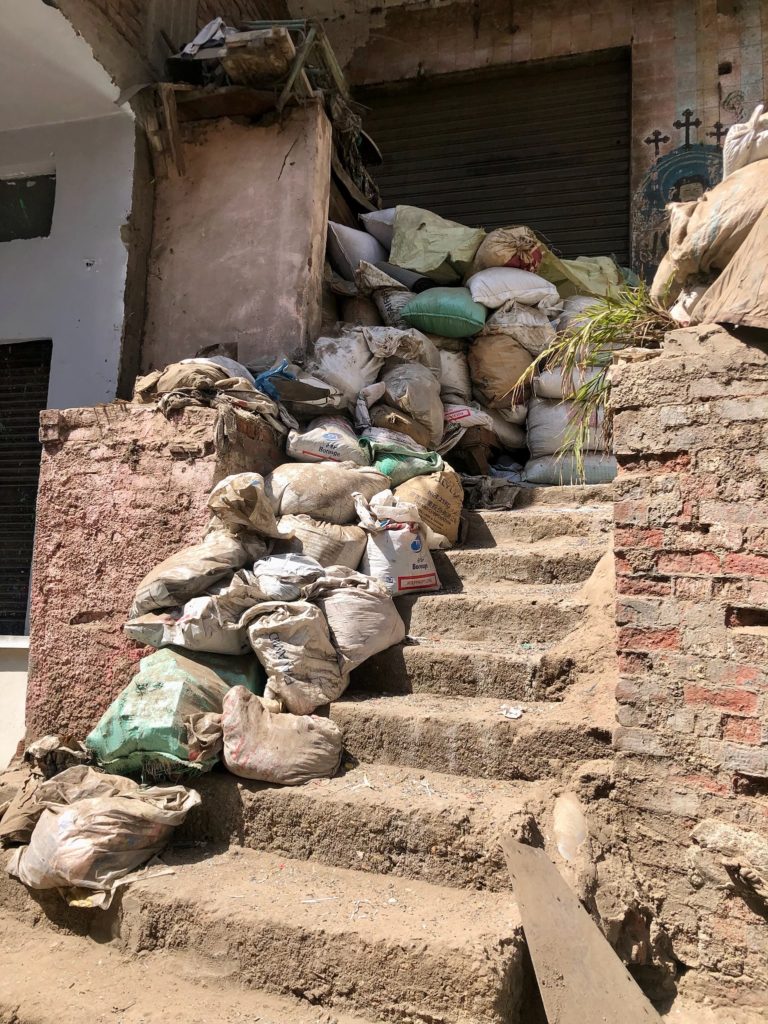
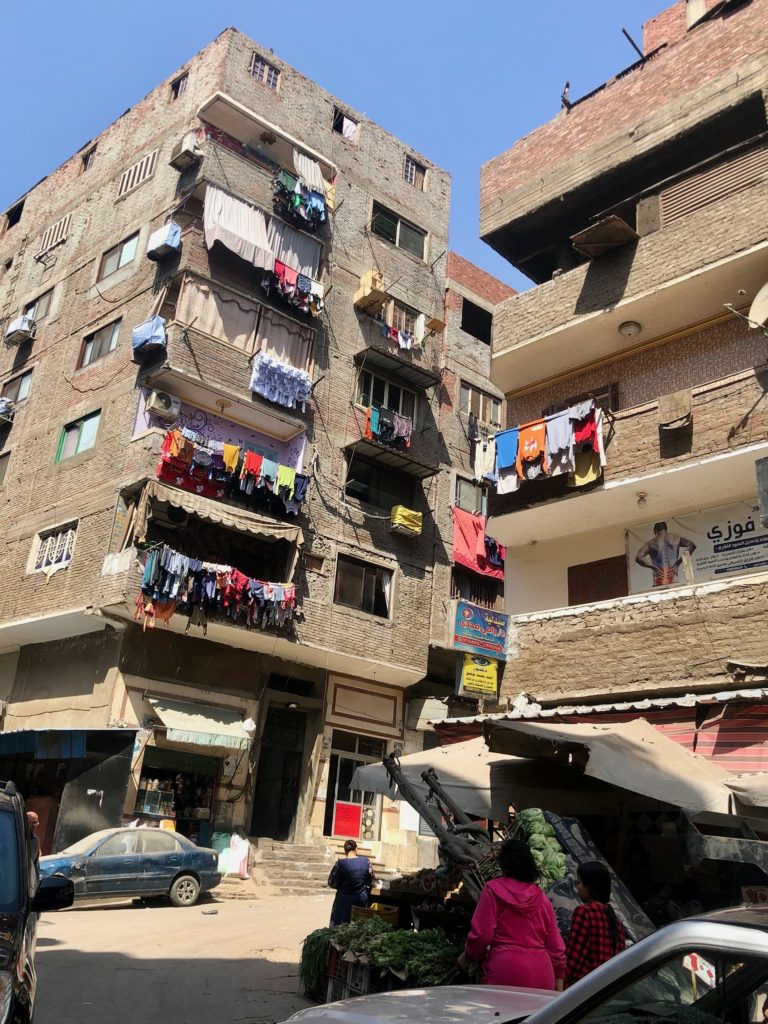
The Story of St. Simon – Ye With the Faith of a Grain of Mustard Seed…..
The 10th century Saint Simon worked as a tanner and cobbler. In modern terms, Simon made and repaired shoes. One day, lust arose in Simon as he leered at the legs of a beautiful woman as he repaired her shoe. Without hesitating, he poked his eye out with his needle to punish himself for his sin. He plucked out his eye to follow the Biblical injunction of Mathew 5: “If your right eye causes you to stumble, gouge it out and throw it away. It is better for you to lose one part of your body than for your whole body to be thrown into hell.” From then on, Simon the shoe tanner became well known in his community as that one-eyed man devoted to God, the excellent cobbler who also dedicated himself to distribute water to the poor.
This faith of this man went on to move mountains. Around 973 A.D, there was a big argument between the leading Jew, Christian and Muslim of the area. The ruler, the local Islamic Potentate Caliph al-Muizz, (reigned during AD 972–975)[2] teamed up with the Jewish leader to trap Abraham, the local Coptic Patriarch. They quoted back to the Coptic Patriarch the the Gospel of Matthew where Jesus replied: “Truly I tell you, if you have faith as small as a mustard seed, you can say to this mountain, ‘Move from here to there,’ and it will move. Nothing will be impossible for you.”” (Matthew 17:20).
The Caliph asked the Patriarch “What sayest thou concerning this word? Is it your gospel or not?”[2] The Coptic leader answered “Yes, it is in it.” After hearing answer, the Caliph demanded that this very miracle be performed by the Patriarch’s hand or else he and all the local Copts would be killed by the sword. Thus, Mount Mokattam had to be moved from the edge of the Nile to the outskirts of the Cairo urban area. The Patriarch asked for three days to complete this mountain moving miracle.
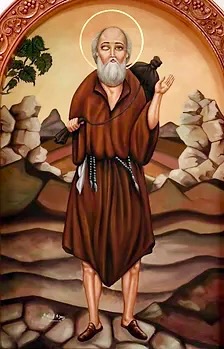
The Patriarch put together a group of monks, priests and elders. He told them stay in the church for three days for a penance. On the morning of the third day, Patriarch was praying in the Hanging Church, when he saw Mary, mother of Jesus. The Holy Virgin told him to go to the great market. She said to him, “There thou wilt find a one-eyed man carrying on his shoulder a jar full of water; seize him, for he it is at whose hands this miracle shall be manifested.”[2] Abraham listened to Mary and went to the market where he met the man the Holy Virgin spoke of.
Simon told the Patriarch to go out with his priests and all his people to the mountain with the Caliph and all his soldiers. Simon then told Patriarch Abraham to cry out “O Lord, have mercy” three times and each time to make the sign of the cross over the mountain.[2] The Patriarch followed the words of Simon and the mountain was lifted. After the miracle was performed in the presence of the Caliph, the Patriarch turned left and right looking for Simon, but he had disappeared and no one could find him. The Caliph turned to Abraham and said “O Patriarch, I have recognized the correctness of your faith.” Shortly after the miracle took place, Caliph Al-Muizz converted to Christianity.
But Why Does Simon Have All These Rock Cave Churches Clustered Together?
Simon is credited with lodging Mokattam in a place now smack dab in the middle of greater Cairo, an ever expanding city. At the base of this mountain were very large cracks and crevices that emerges when the mountain was dropped down to its current location. From these fissures, the ever resourceful Copts got the inspiration in recent decades to undertake a dual purpose construction project: a huge excavation of St. Simon’s burial grounds and creating massive, underground cathedrals and a monastery. After the discovery of the cave in which Saint Simon was buried, the excavation and building went nonstop. The monastery complex including four separate, underground churches was built by the local Coptic community with the help of many allies. The photos below focus on the two main churches nestled in this mountain location. However, many other churches and structures are included on this site. An example of an above-ground church is Right:
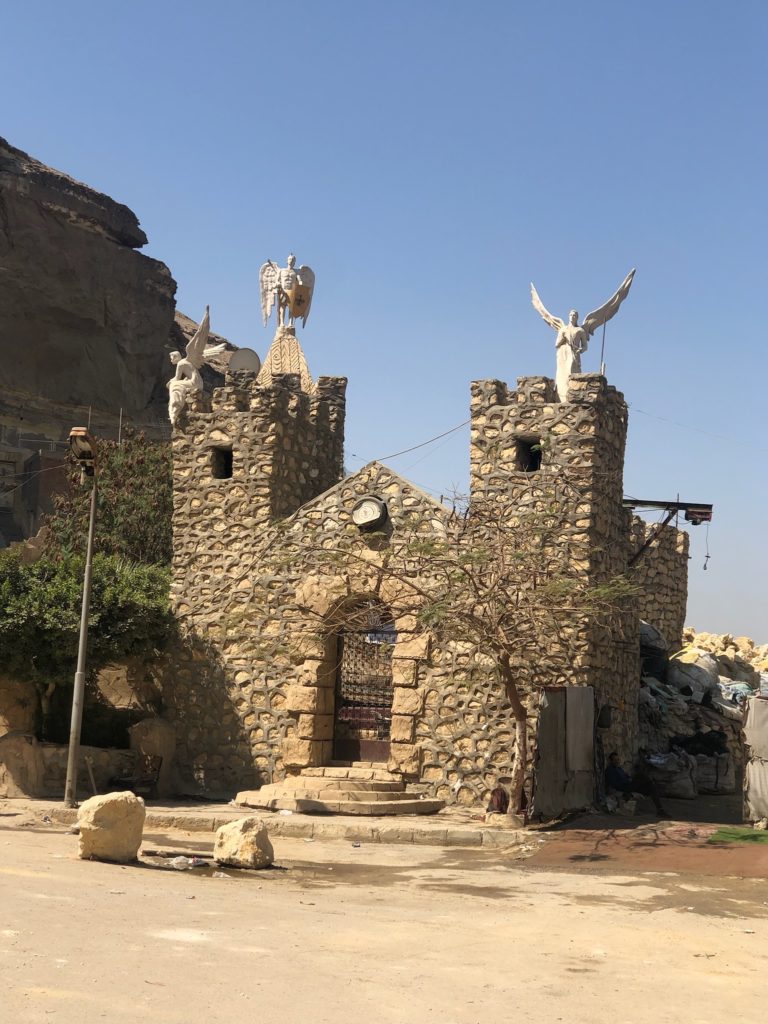
The St. Simon Outdoor Amphitheater Church
The underground Monastery Church of St. Simon is the largest of seven churches built into the caves and crannies of Mokattam adjacent to downtown Cairo. The second largest and equally renouwned church is is outdoor amphitheater church, right next door to the Monastery Church. The Saint Simon Ampitheater was built starting in the 1970’s, and construction of this underground warren of Churches continutes unabated to this day. The reasons this Amphitheater is so heralding as a sacred space with secular beauty is evident from these photographs:
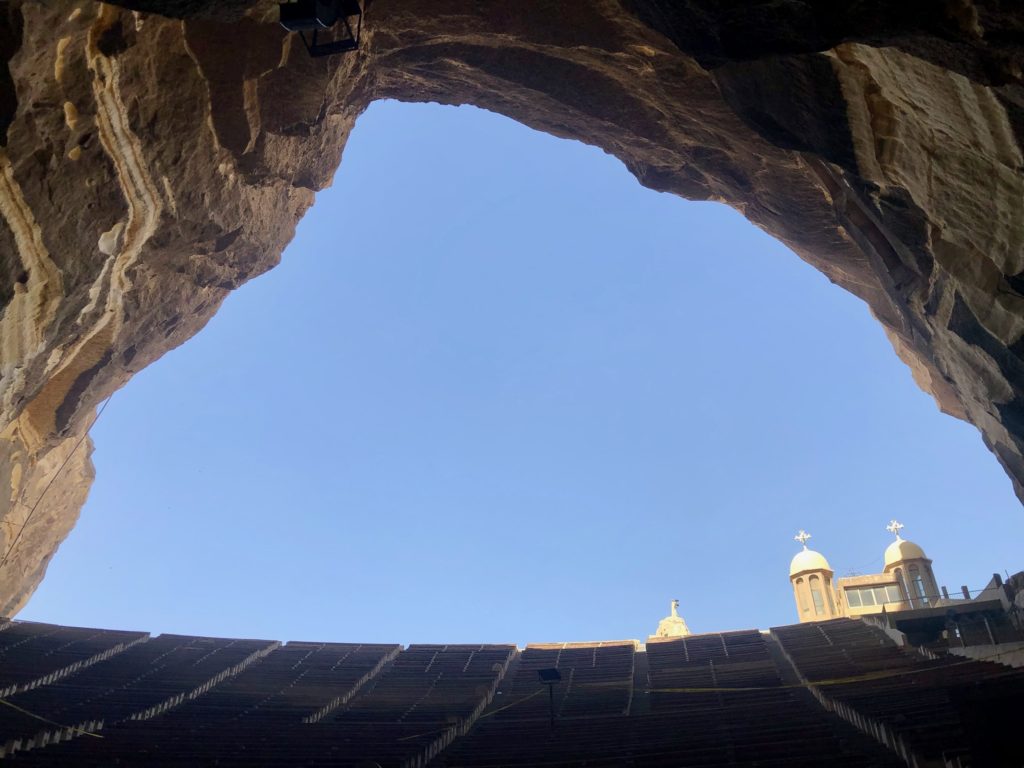
The view above is looking up and out from the Altar. The dizzying perspective below left comes from looking straight up from the altar. The photograph below right is from the left side of the seating area close to the bottom of this section. The full seating array is quite expansive. These photos only captures a small segmets of the pews.
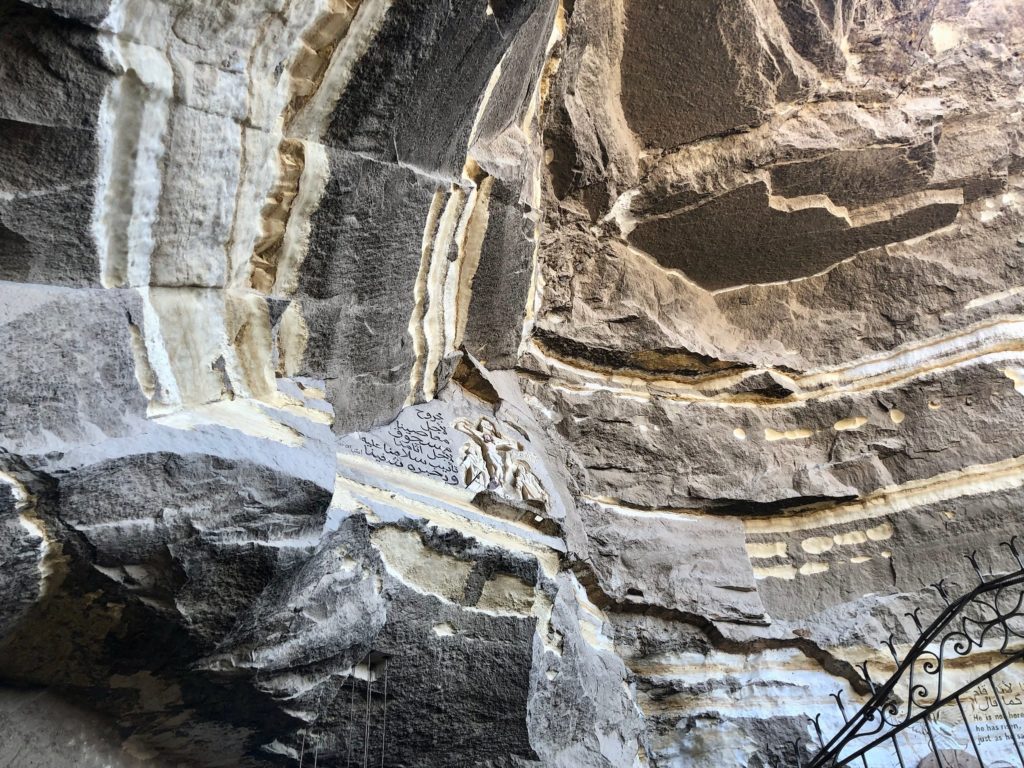

The St. Simon Monastery And Underground Cave Church
Known as the Cave Church, the Monastery of St, Simon is a masterpiece of construction and design. Not only is the Monastery a feat of underground engineering, but also artistic display in full, human-size or larger including: impressive paintings; mural stories carved on the mountains rock walls; and sculptured statues of Virgin Mary, and Mary Magdalene. The Monastery can accommodate up to 20,000 people. It is the largest of the seven churches built inside the Mokattam caves; and indeed, one of the largest churches in the Middle East altogether.
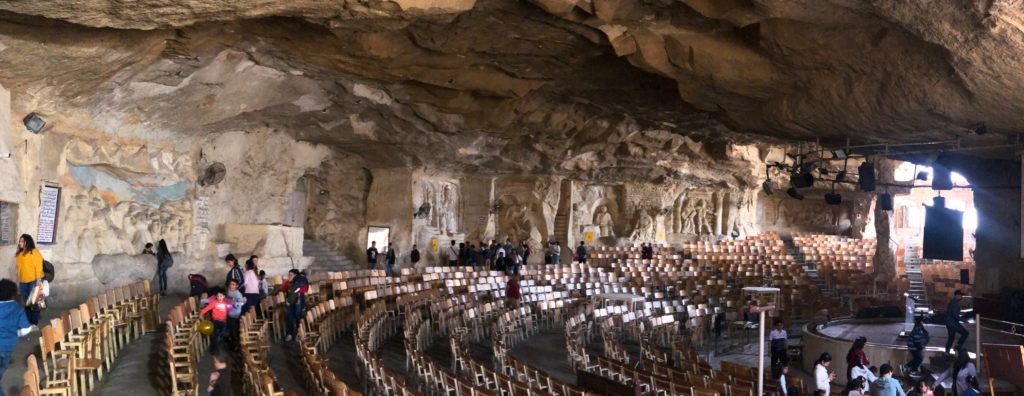
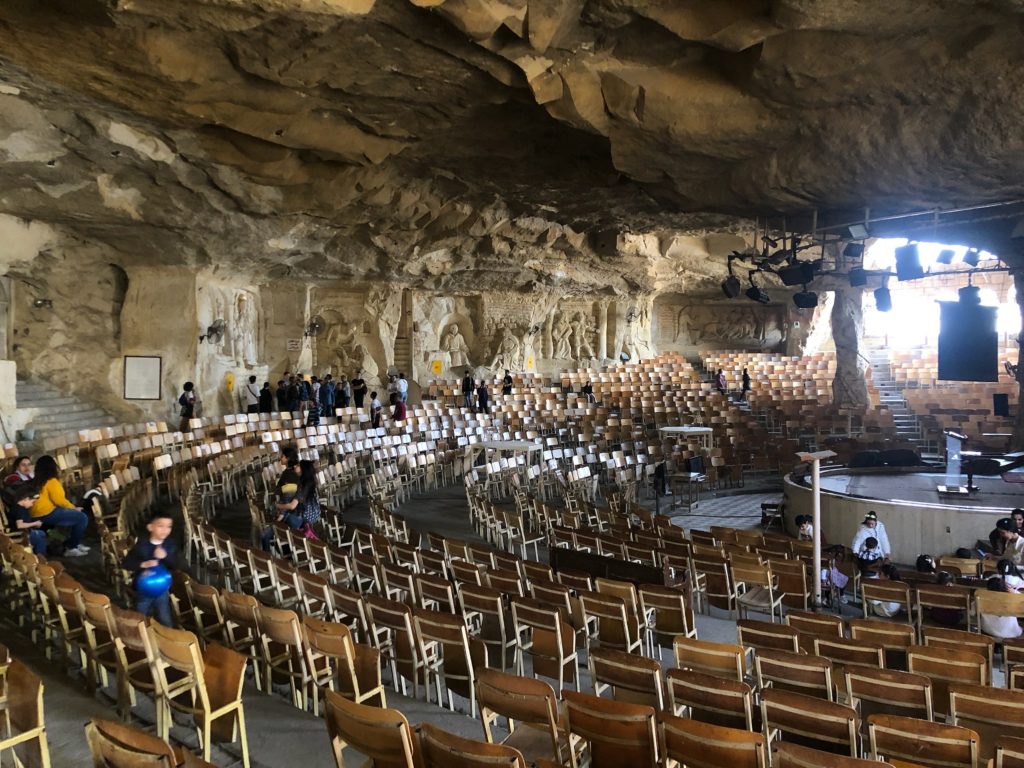
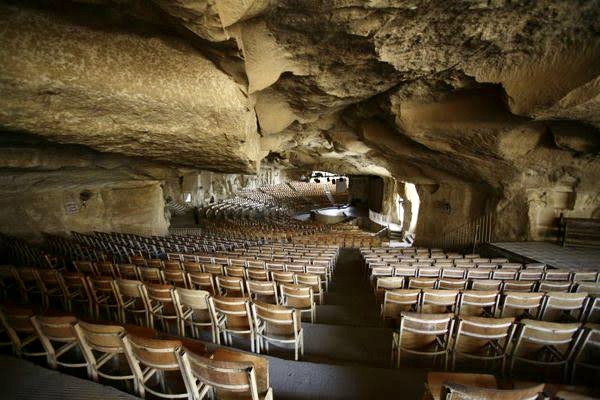
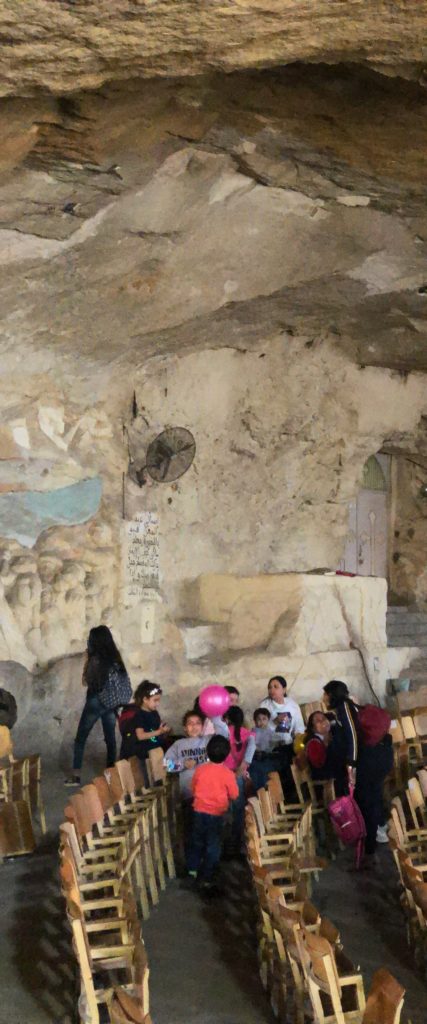
The Old Coptic Quarter, Downtown Cairo
Another main area for Coptic Worship is Coptic Cairo, a section of the ancient Islamic Quarter of Cairo. According Wikipedia article, Coptic Quarter: “The Coptic Cairo is a part of Old Cairo which encompasses the Babylon Fortress, the Coptic Museum, the Hanging Church, the Greek Church of St. George and many other Coptic churches and historical sites. It is believed in Christian tradition that the Holy Family visited this area and stayed at the site of Saints Sergius and Bacchus Church (Abu Serga).[1] Coptic Cairo was a stronghold for Christianity in Egypt both before and during the Islamic era, as most of its churches were built after the Muslim conquest of Egypt in the 7th century.”
Coptic Art Museum
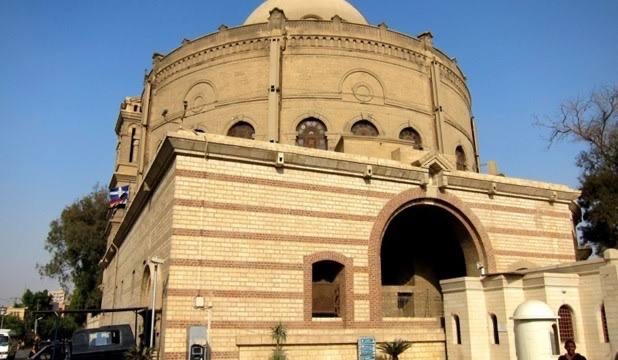
Coptic art and architecture in this ancient city compound is not limited to the numerous churches, nunneries, a fortress, the preserved home of the Holy Family, and an ancient Jewish Synagogue. Additionally, the Coptic Quarter has tons of art in a more traditional museum showcase, all displayed in the Coptic Art Museum. The museum is chock a block filled with: textiles, architecture, art and saintly relics, including illuminated gold paintings, among a vast array of other treasures.
Oddly enough, as mentioned above, The Coptic Church does not worship the saints and icons of Christ, which is a hallmark closely identified with the Catholic tradition.
They do, however, have the saints painted on wood, and believe saints act as intercessors for our prayers. https://christianministryedu.org/faq/what-is-the-coptic-church/. Like the closely related Orthodox Christians, the Copts are also celebrated for the luminous painting of saints, martyrs, and the Holy Family. The original, ancient paintings are showcased in the Coptic Art Museum but also in many religious sites in the Coptic Quarter. Modern copies and contemporary original paintings are available in many church gift stores and tourist shops also.
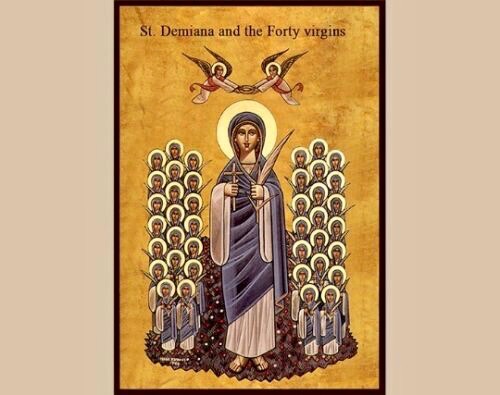
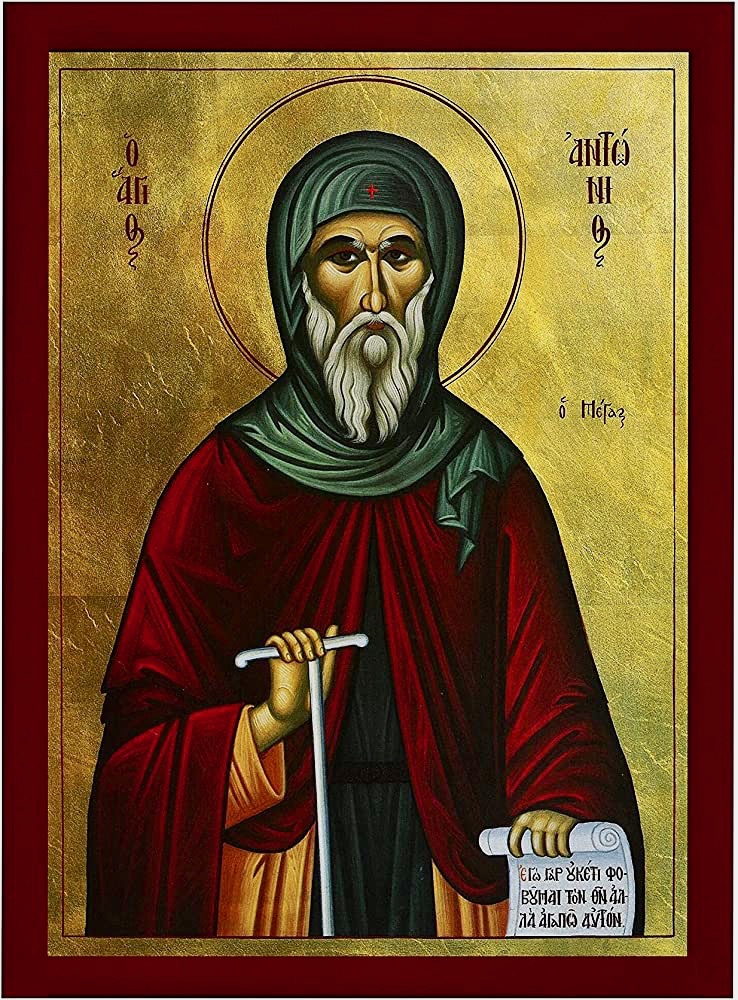
Other examples of Coptic art on display at the museum
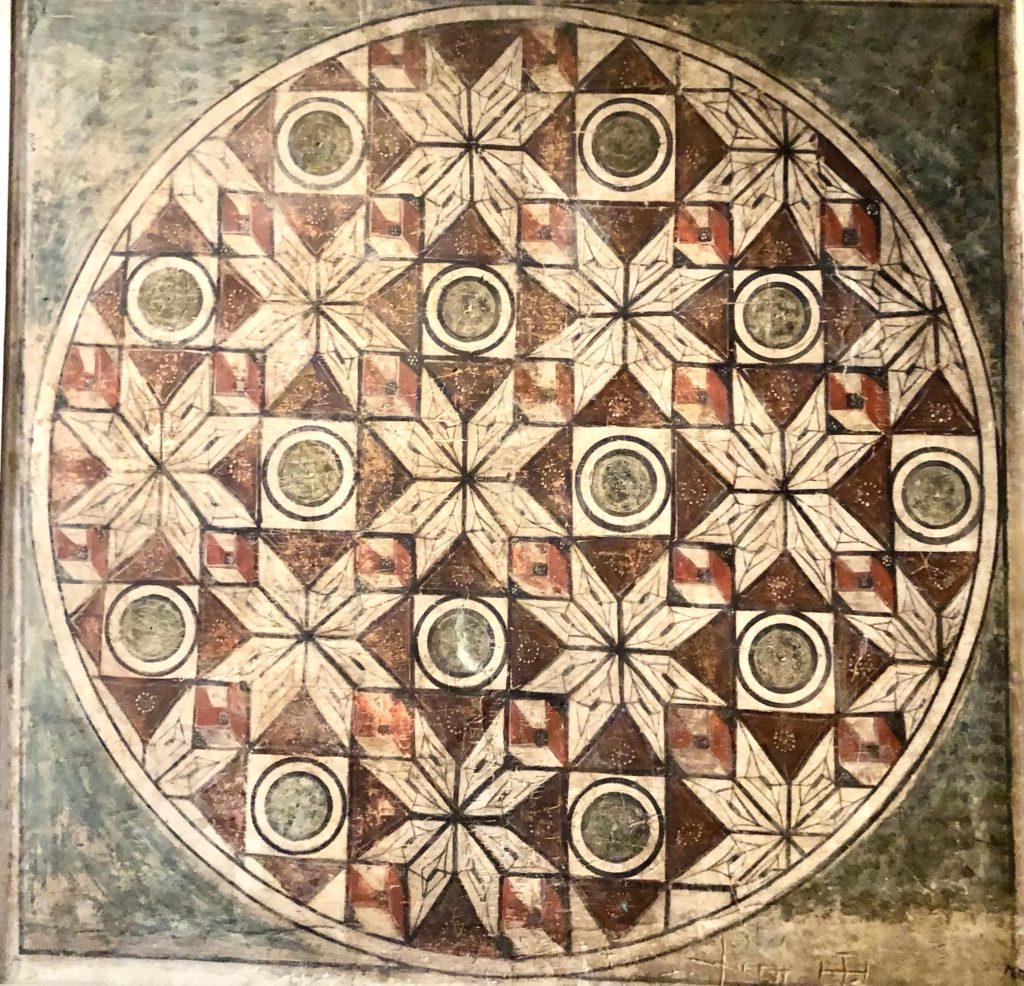
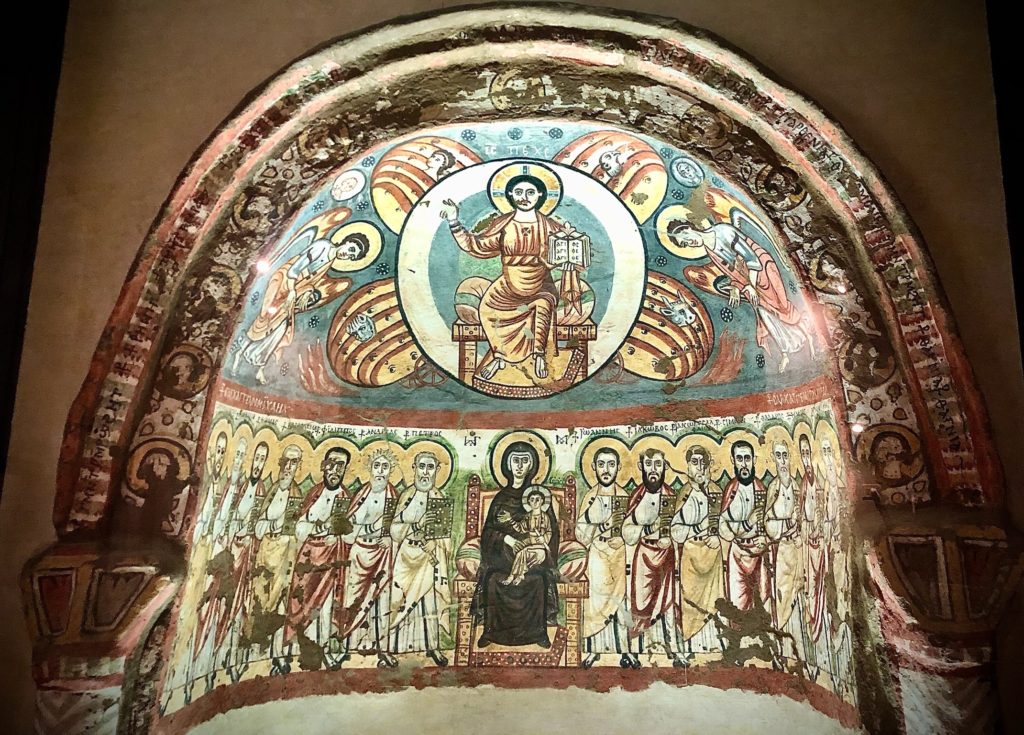
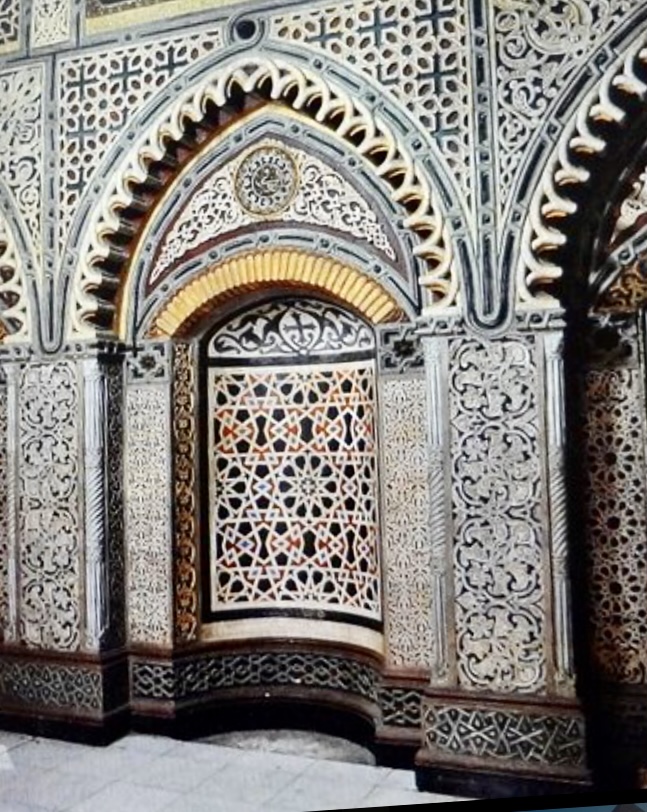
The Religious Sites in Coptic Cairo: The Curious Story of St. George
Many of the Coptic illuminated painting of the Saints focus on St. George, highly venerated by the Copts. St. George also serves as the patron saint of England. George of Lydda was of Turkish-Greek origins and served in the Roman army. St. George was chained up for seven years by a local despot for refusing to renounce his Christian faith.
According to local tradition, he was imprisoned in what is now the Monastary of St. George in what became the Coptic Quarter of Old Cairo. The chains holding him said to have healing power.
The Monastery has the very chains used to shackle George of Lydda and the huge, heavy door that enclosed him in his prison cell.

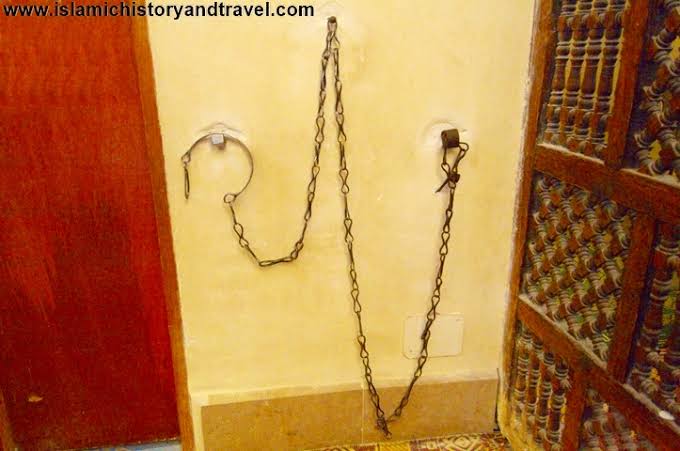
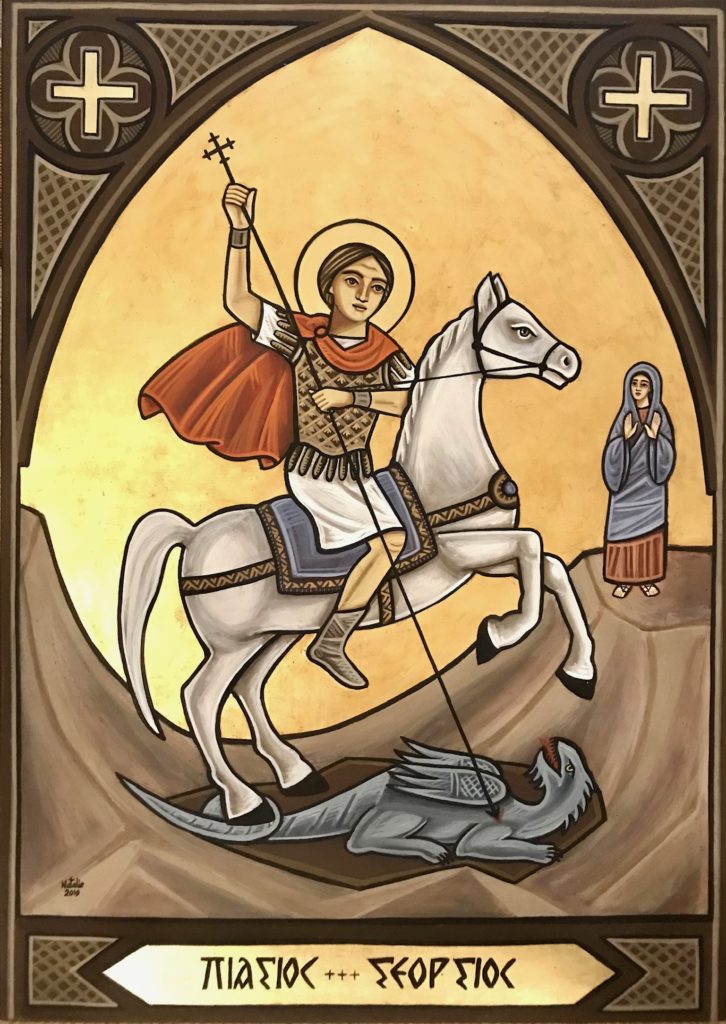
The Holy Family of Joseph of Joseph, Mary and Jesus is believed in Christian tradition to have stayed in Egypt. The Copts claim that the Holy Family visited this area and stayed at the site of Saints Sergius and Bacchus Church (Abu Serga), as seen below.
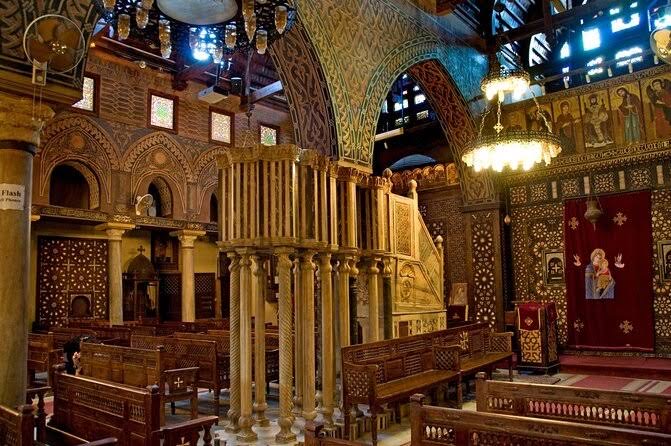
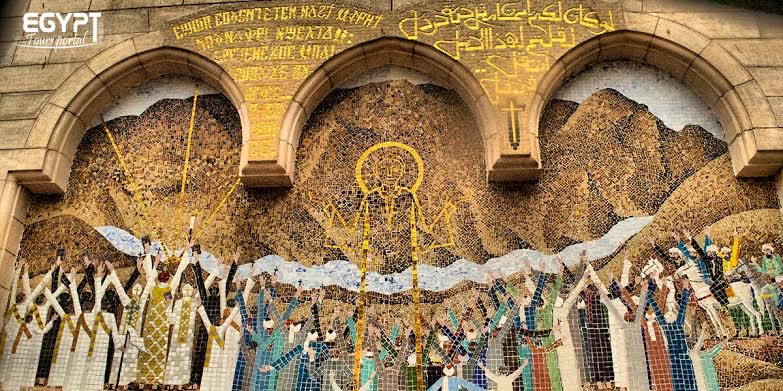
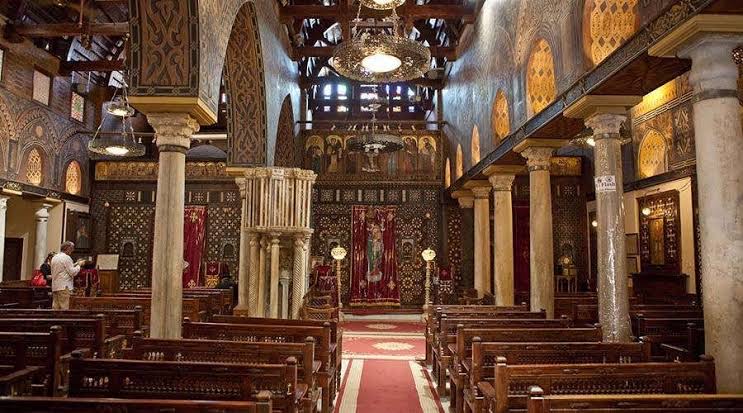
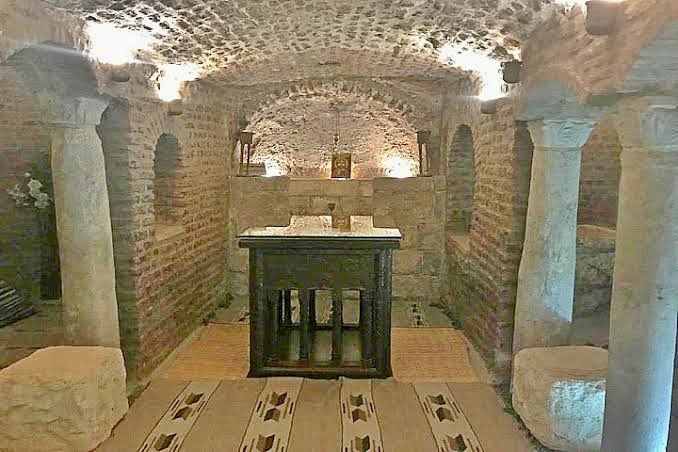
Wadi Natrun – The Oasis

Wadi el-Natrun, or the Valley of Salt, located in the Nitria Desert, was a bustling town town in Ancient Egypt. The region contains large alkaline lakes that accumulate natron-rich salt deposits. The mineral was used in the mummification ceremonies, and was also used by Egyptian artisans to paint elaborate artworks inside ancient tombs.
A safe refuge for those who seek solitude, the Wadi Natrun Monasteries are a testament to the resilience of the Coptic faith. Wadi Natrun is a cluster of Coptic Monasteries, the oldest dating back to the 4th century. Wadi Natrun complex includes religious schools, libraries, shrines, and naturally, several churches. Nestled in these institutions are many relics of local saints, and even some bones believed to be from John the Baptist. Monks are eager to educate foreign visitors and many visitors find the monks to be, well, ….enlightening.
At one point, Wadi Natrun was the world’s earliest preeminent centers of the Christian faith. Even now, the region of Wadi Natrun remains one of the most sacred regions for Christianity. The first Christian settlement there was due to Saint Macarius the Great, who settled there around 330 A.D. Soon after arose the oldest monastery in Christendom, the Monastery of al-Baramus. Between the 3rd and 7th centuries, this center attracted a huge number of people who came here to enter one of more than one hundred (100) Monasteries in this area of the Nitria Desert. Many anchorites, hermits, and monks lived there, either in the desert itself or on the hills bordering it, attracted by the solitude and harshness of desert life.These individuals believed that living in this region would teach them contempt for the material world and would allow ascetics to respond better to God’s call.
The importance of the region declined from the seventh century onwards. Already from the beginning of the 5th century, the Monasteries suffered attacks and looting by the nomads living in the Libyan desert. With the Muslim conquest of Egypt in 641 A.D., many of the Monasteries were destroyed and plundered by the Arabs and others. Yet, there are still four Coptic Orthodox Monasteries in the region today, that collectively have five hundred monks who live there permanently. Above discussion taken from Egyptiantimetravel.com
One of the largest and oldest monasteries at Wadi Natrun is the Monastary of Saint Bishoy. Today 200 monks and 20 novices live in the monastery of Anba Bishoy. In recent decades, St. Bishoy and other once moribund Monasteries have taken off; filled with new monks and an ever-growing Coptic community. Saint Bishoy and the other monastery are in full revival mode. See https://www.oikoumene.org/news/new-life-behind-high-walls-egypts-monasteries-bursting-at-the-seams
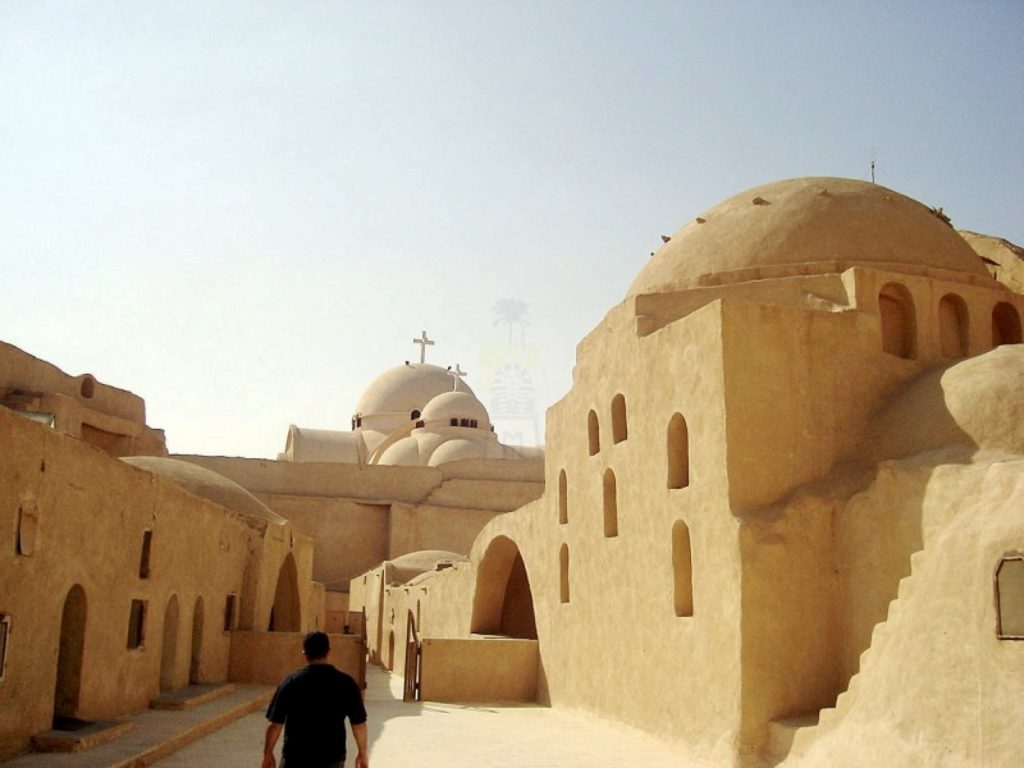

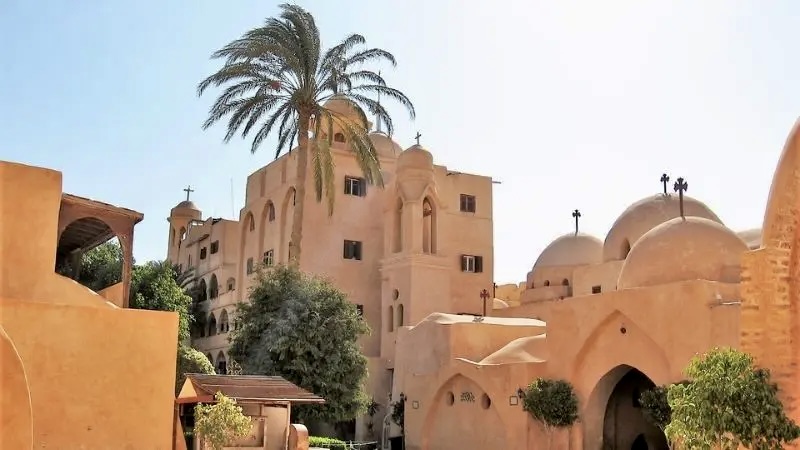
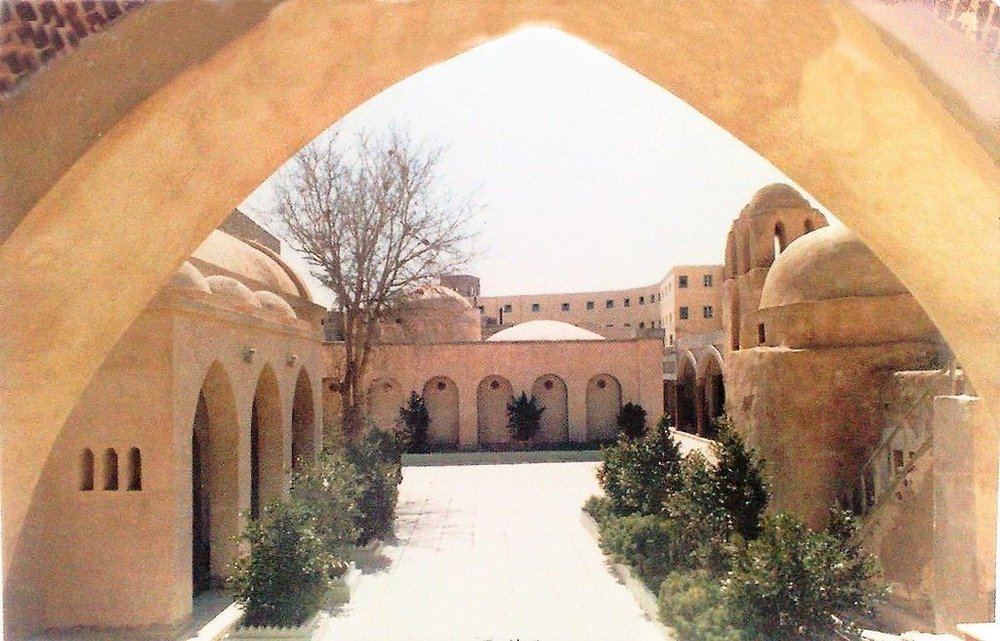
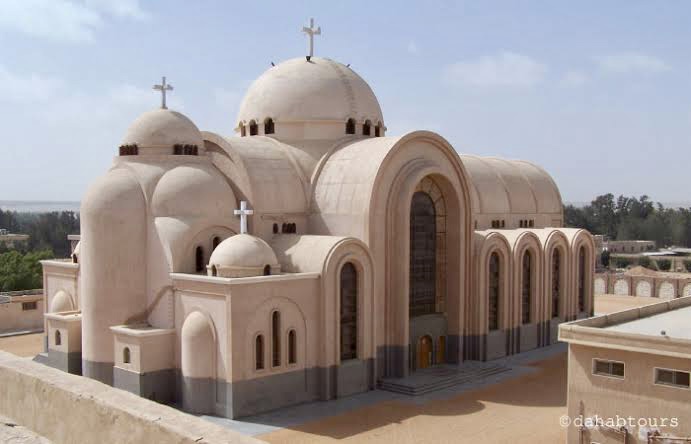
And the inside of the Cathedrals and Monasteries are just as dramatic as their architecture. For the sake of brevity, only one example is provided here:
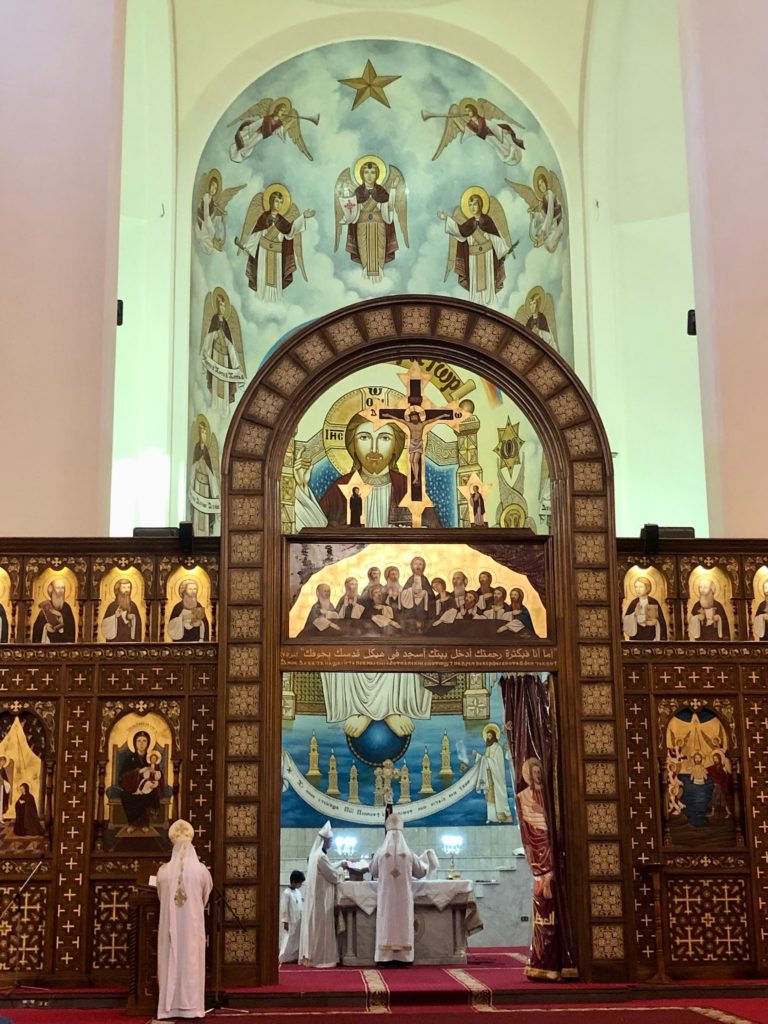
The soaring, sacred architecture rises out of the desert salt flats. Combined with the stories of the sacrifice of the saints and sacred residents, Wadi Natrun is an inspiration to all.
Bonus Pictures: the Writer on the Left, Jesus Christ on the Right
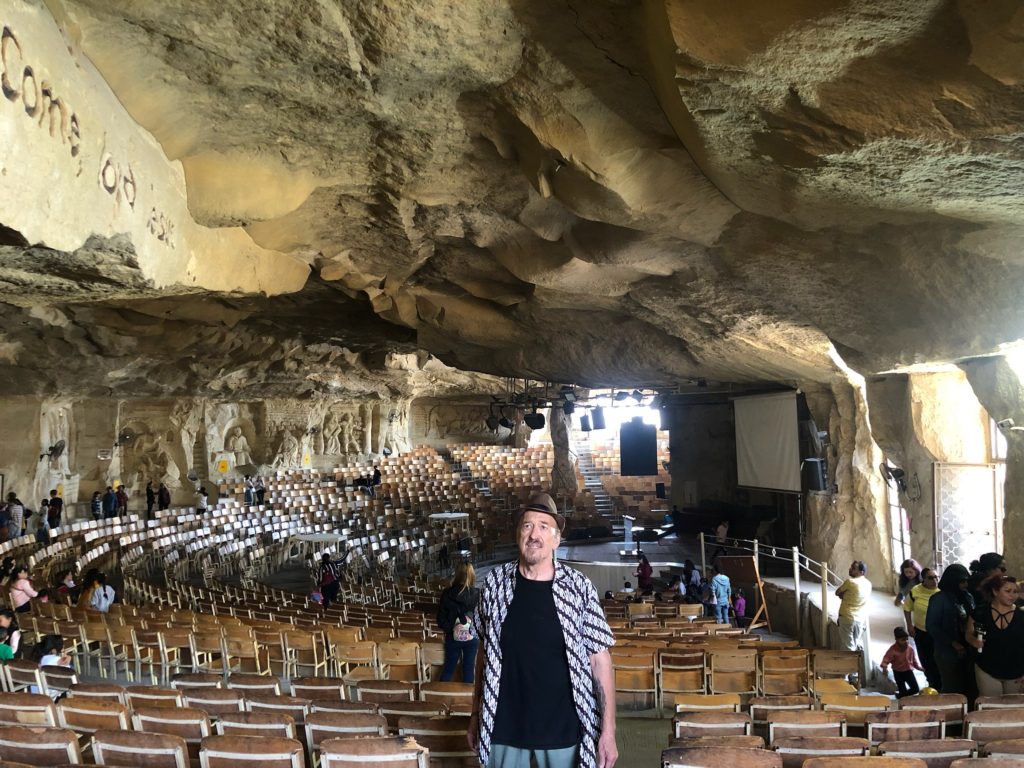
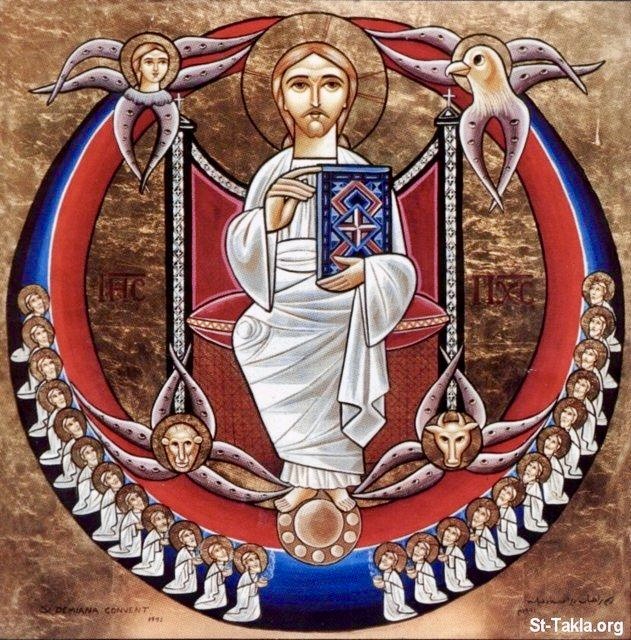
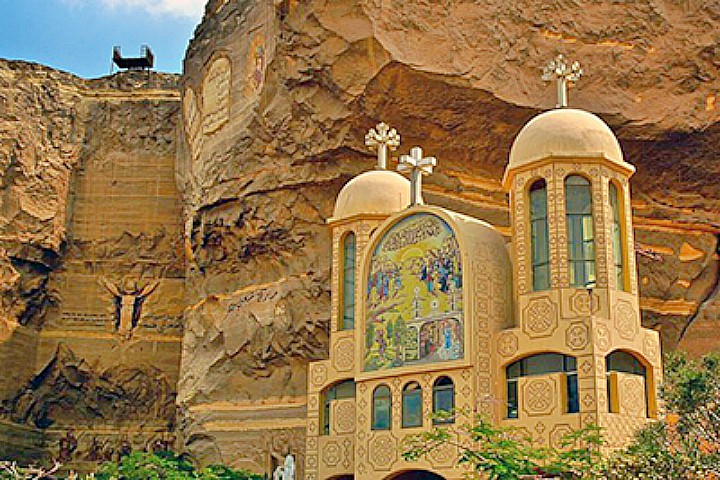
Absolutely fascinating!